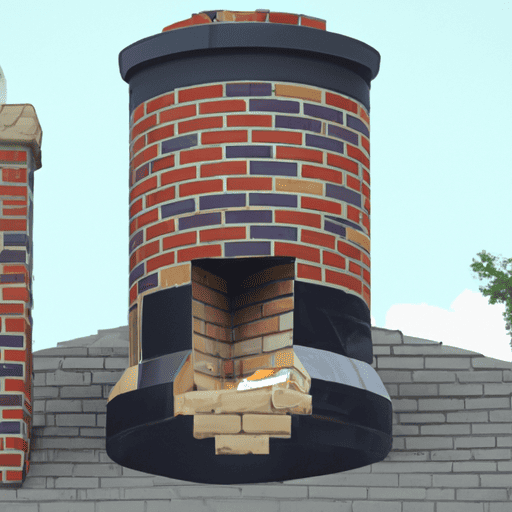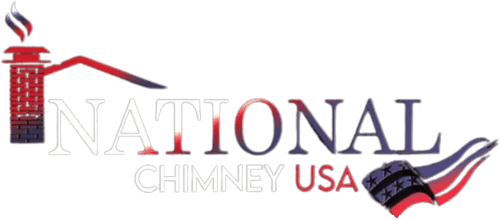
Have you ever noticed that your fireplace doesn’t seem to be working as well as it should? Maybe you’ve noticed smoke coming back into the room or a lack of heat being produced. These issues are often caused by a problem with the chimney draft. Understanding the physics behind chimney drafts can help you diagnose and fix these issues.
First, let’s define what a chimney draft is. A chimney draft is the force that pulls air up and out of the chimney. This force is created by the difference in air pressure between the inside and outside of the chimney. When the air inside the chimney is warmer than the air outside, it rises and creates a vacuum that pulls air up and out of the chimney.
However, there are several factors that can affect the strength of the chimney draft. One of the most common issues is a blockage in the chimney. This can be caused by a buildup of creosote, debris, or even a bird’s nest. When the chimney is blocked, the air cannot flow freely, which can cause the draft to weaken or even reverse.
Another factor that can affect the chimney draft is the height of the chimney. The taller the chimney, the stronger the draft will be. This is because the taller chimney creates a greater difference in air pressure between the inside and outside of the chimney. If your chimney is too short, you may need to add an extension to improve the draft.
The temperature of the air inside the chimney can also affect the draft. As mentioned earlier, warmer air rises and creates a vacuum that pulls air up and out of the chimney. If the air inside the chimney is too cold, it may not rise and create enough of a vacuum to pull air up and out of the chimney. This can be caused by a lack of insulation or a cold outside temperature.
Finally, wind can also affect the chimney draft. When the wind blows against the chimney, it can create a negative pressure that can weaken or reverse the draft. This is why it’s important to have a chimney cap installed to prevent wind from blowing down the chimney.
Now that we understand the physics behind chimney drafts, let’s talk about how to fix them. The first step is to inspect the chimney for any blockages or debris. If you find a blockage, you will need to remove it before you can improve the draft. This may require the help of a professional chimney sweep.
If your chimney is too short, you may need to add an extension to improve the draft. This can be done by adding a metal pipe to the top of the chimney. Make sure to follow local building codes and regulations when making any modifications to your chimney.
If the air inside the chimney is too cold, you may need to add insulation to the chimney. This can be done by wrapping the chimney with insulation or by installing an insulated liner. This will help to keep the air inside the chimney warm, which will improve the draft.
Finally, if wind is affecting the draft, you will need to install a chimney cap. A chimney cap will prevent wind from blowing down the chimney and creating a negative pressure. Make sure to choose a cap that is the right size for your chimney and that is made from a durable material.
Chimney drafts are a common problem that many homeowners face. A drafty chimney can cause a variety of issues, including poor heating efficiency, increased energy bills, and even health problems. Fortunately, there are several common causes of poor chimney drafts, and many of them can be easily addressed.
One of the most common causes of poor chimney drafts is a dirty chimney. Over time, soot and creosote can build up inside the chimney, reducing the amount of air that can flow through it. This can cause smoke to back up into the house, as well as reduce the efficiency of the fireplace or stove. To address this issue, it is important to have your chimney cleaned regularly by a professional chimney sweep.
Another common cause of poor chimney drafts is a blocked chimney cap. The chimney cap is designed to keep debris, animals, and rain out of the chimney, but if it becomes blocked, it can also prevent air from flowing through. This can cause smoke to back up into the house and reduce the efficiency of the fireplace or stove. To address this issue, it is important to have your chimney cap inspected regularly and cleaned if necessary.
A third common cause of poor chimney drafts is a poorly designed chimney. If the chimney is too short, too narrow, or too wide, it can cause air to flow in the wrong direction, reducing the efficiency of the fireplace or stove. To address this issue, it may be necessary to have your chimney redesigned or replaced by a professional.
A fourth common cause of poor chimney drafts is a lack of insulation. If the chimney is not properly insulated, it can allow cold air to enter the house and warm air to escape, reducing the efficiency of the fireplace or stove. To address this issue, it may be necessary to have your chimney insulated by a professional.
A fifth common cause of poor chimney drafts is a lack of air flow. If the house is too tightly sealed, it can prevent air from flowing through the chimney, reducing the efficiency of the fireplace or stove. To address this issue, it may be necessary to open a window or door to allow air to flow through the house.
If you’re experiencing draft issues with your chimney, it’s important to address them as soon as possible. Not only can drafts make your home uncomfortable, but they can also be a safety hazard. Fortunately, there are professional chimney companies that can help fix these issues.
When hiring a professional chimney company, it’s important to do your research. Look for a company that has experience in fixing draft issues specifically. You’ll also want to make sure they are licensed and insured.
Once you’ve found a reputable company, they will likely start by conducting an inspection of your chimney. This will help them determine the cause of the draft issue. There are several potential causes of chimney drafts, including a blockage in the chimney, a damaged chimney liner, or a poorly designed chimney.
If the issue is a blockage, the chimney company will need to remove it. This could be anything from a bird’s nest to a buildup of creosote. Removing the blockage will allow air to flow freely through the chimney, eliminating the draft.
If the issue is a damaged chimney liner, the chimney company will need to repair or replace it. The liner is an important component of the chimney, as it helps protect the chimney from heat and corrosion. A damaged liner can allow air to escape, causing a draft.
Finally, if the issue is a poorly designed chimney, the chimney company may need to make some modifications. This could include adding a chimney cap or adjusting the height of the chimney. A well-designed chimney will allow air to flow smoothly, eliminating drafts.
It’s important to note that fixing draft issues with your chimney is not a DIY project. Chimneys can be dangerous, and attempting to fix them yourself could result in injury or further damage to your home. Always hire a professional chimney company to handle these types of repairs.
In addition to fixing draft issues, a professional chimney company can also help with regular maintenance of your chimney. This includes cleaning the chimney to remove any buildup of creosote or other debris. Regular maintenance can help prevent draft issues from occurring in the first place.
In conclusion, if you’re experiencing draft issues with your chimney, it’s important to hire a professional chimney company to fix them. Look for a company with experience in fixing draft issues specifically, and make sure they are licensed and insured. The company will likely start by conducting an inspection of your chimney to determine the cause of the draft issue. They may need to remove a blockage, repair or replace a damaged chimney liner, or make modifications to a poorly designed chimney. Remember, never attempt to fix chimney issues yourself – always hire a professional.
